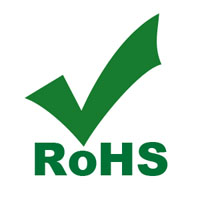What is RoHS?

RoHS is the acronym for the Restriction of Hazardous Substances directive that was adopted by the European Union (EU) member states in February 2003. While the law was originally intended to address the large amounts of toxic e-waste from recycling and recovery of electrical goods, the regulations have become more pervasive as the years have passed as most policies and guidelines of this nature do. Manufacturers are now often asked to supply RoHS compliant materials for end products that are not related or linked to electrical or electronic equipment in any way. In fact, most hot-dip galvanized steel products should be exempt from the RoHS directive due to the nature of the products that are produced by the industry and their end use. Just as an example, galvanized steel used for most highway and transportation purposes should be exempt from the directive (beams for bridges, grating for walkways, poles for lighting, guardrails, etc.).
What do you need to know if asked to provide RoHS compliant galvanized steel?
RoHS is intended to eliminate or severely curtail the use of six hazardous materials in products manufactured or distributed in the EU. Of the six materials, only three could be expected to be associated with a hot dip galvanized coating. These include lead, cadmium, and hexavalent chromium.
Metalplate Galvanizing has established Standard Operating Procedures to ensure we minimize the RoHS element concentrations of our galvanizing baths by exclusively purchasing Special High Grade or better zinc. The ASTM Standard B6 specifies that Special High Grade zinc have a maximum lead composition of 0.003% and cadmium of 0.003%. The maximum concentrations required by the RoHS guidelines are 0.1% for Lead and 0.01% for Cadmium. Aside from being guaranteed to be in compliance strictly from the grades of zinc we purchase, Metalplate Galvanizing’s standard practice is to sample the molten metal of the galvanizing bath on a quarterly basis and analyze for elements of interest. The results of our sampling consistently show that our lead and cadmium concentrations are several orders of magnitude less than the RoHS limits.
As for the potential chromium that could be present, the solution is applied to the surface of the galvanized material during the quenching step of our process. The maximum concentration of the RoHS legislation for hexavalent chromium is 0.1%. Our quenching bath is maintained at approximately one-tenth of this level and since the passivation film applied to the material is only a few micrometers thick, the maximum hexavalent chromium concentration that could be present is far below the RoHS limit.
Thus, the galvanized coatings produced at any Metalplate Galvanizing facility will conform to all aspects of the RoHS directive and be 100% compliant. Metalplate Galvanizing can provide you with a certification letter for your project or material if necessary. Please contact Metalplate’s Technical Department if you require such documentation.
Further information on this subject can be found on the American Galvanizers website here.
